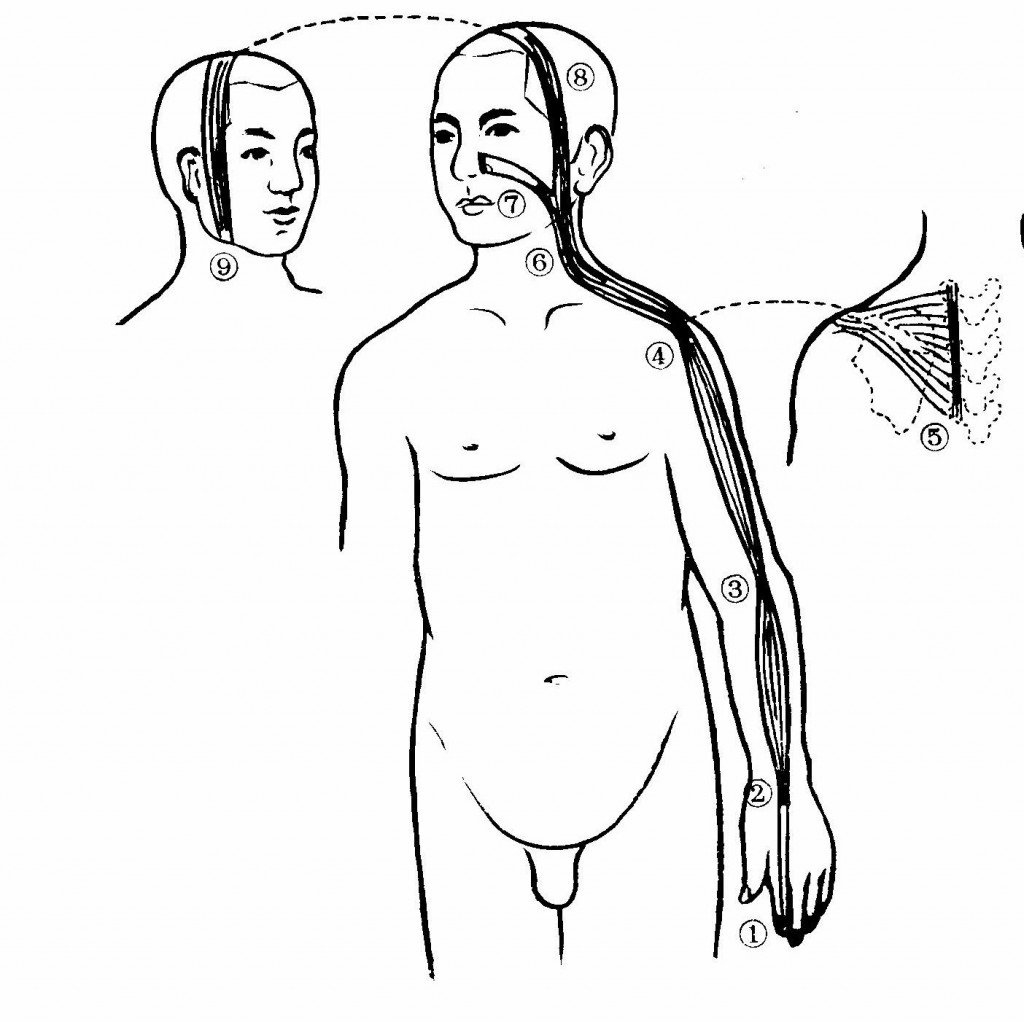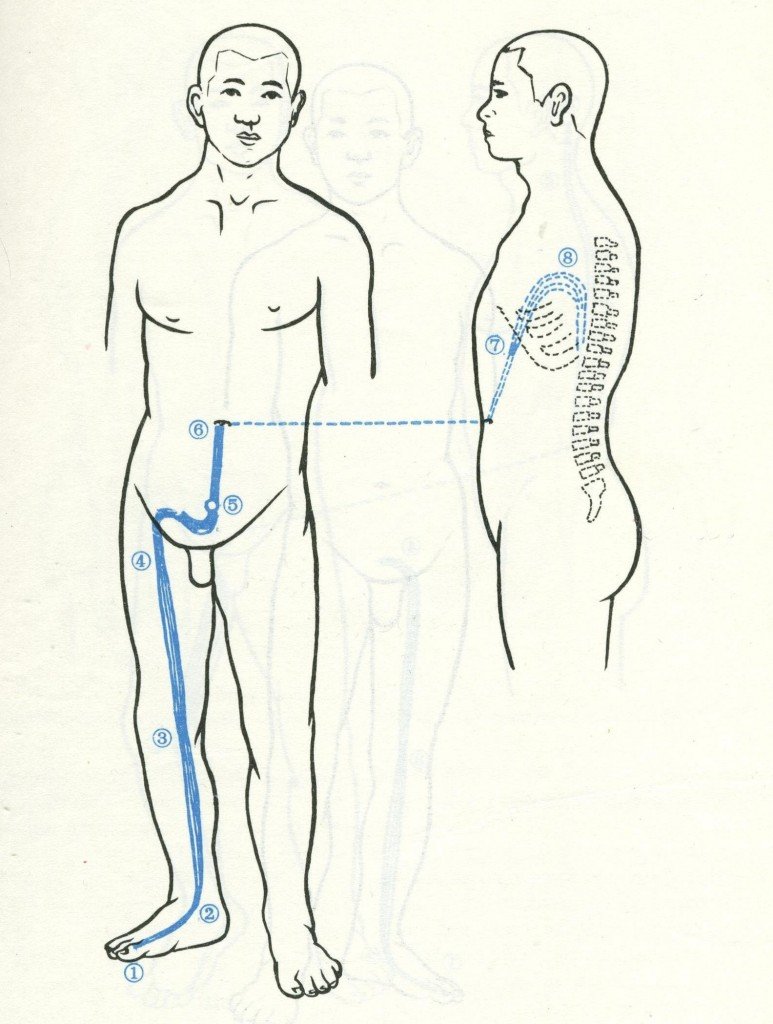[Scientific Qi Exploration 气的科学探讨]
The Twelve Tendino-Muscular Meridians. Part 2
Marty Eisen Ph.D.
6. The Small Intestine Jing Jin Pathway
The pathway begins at the little finger and attaches at the back of the wrist (1, 2). It ascends along the forearm to attach at the medial condyle of the humerus (2, 3). Continuing along the upper arm, it attaches below the axilla (3, 4). A branch ascends behind the axilla, curving around the scapula and running in front of the Bladder Meridian on the neck and attaching behind the ear (5, 6). Then, it continues around the ear and descends to attach to the lower jaw and continues upward to the outer canthus (6, 7, 8). The straight portion of this branch has two subbranches.
The upper subbranch emerges behind the auricle and enters the ear (6). The lower subbranch starts at the mandible and ascends around the teeth to the outer canthus and attaches at the angle of the forehead (8, 9).
The symptoms of May Rheumatism (3) are: pain in the little finger which can extend behind the medial epicondyle to the medial aspect of the upper arm and axilla, pain around the scapula extending to the neck, tinnitus, ear pain radiating to the submaxillary area; prolonged closing of the eyes can result in delayed vision. Fistulas, swollen neck and sensations of hot and cold may follow spasms of the neck.
7. The San Jiao Jing Jin Pathway
It begins near the tip of the fourth finger at attaches at the dorsum of the wrist (1, 2). Then, it ascends between the radius and ulna and attaches at the olecranon of the elbow (2,3). Running upward along the lateral aspect of the upper arm, it crosses the shoulder and neck and joins the Small intestine Jing Jin (3, 4). A branch emerges at the mandibular angle to connect to the tongue’s root (5). Another branch ascends in front of the ear to the outer canthus, crosses the temple to the corner of the forehead (6, 7).
Symptoms of June Rheumatism (3) are: Cramps and pain along the Pathway; curled tongue.
8. The Large Intestine Jing Jin Pathway
Begins near the corner of the nail on the radial side of the index finger and attaches at the dorsum of the wrist (1, 2). It ascends along the forearm and attaches at the lateral aspect of the forearm. Continuing up the arm it attaches at LI 15 (Jian Yu, in the depression appearing at the antero-inferior border of the acromioclavicular joint, when te arm is fully abducted.). A branch spreads around the scapula and attaches to the spine (4, 5). Another branch runs from LI 15 to the neck (4, 6). A branch separates and attaches at the side of the nose (7). The straight branch continues upward and passes in front of the Small Intestine Jing Jin, crossing over the head and connecting to the mandible on the opposite side of the face (8, 9).
The symptoms of April Rheumatism (3) are: cramps and spasms along the Pathway, difficulty in raising the shoulders; neck pain and difficulty with neck rotation.
9. The Spleen Jing Jin Pathway
It begins near the lower corner of the medial, big toe nail and attaches at the medial malleolus (1, 2). Ascending the lower leg it attaches to the medial side of the knee (3) and continue up the medial aspect of the thigh, attaching at the hip (4). Then, it curves and passes to the midline, giving off a small set of Vessels which surround the genitalia (4, 8). The straight portion attaches to the umbilicus (5, 6) and enters the abdominal cavity, where it attaches to the ribs and disperses through the chest (7, 8). An internal branch adheres to the spine.
The symptoms of August Rheumatism (3) are: Big toe pain radiating to the medial malleolus, tibia’s pain at the medial aspect of the knee, spasms or pain in the medial upper thigh; pain in the genitals involving the umbilicus and mammary region of the inner aspect of the sternum and spine.





4 Responses to The Twelve Tendino-Muscular Meridians. Part 2